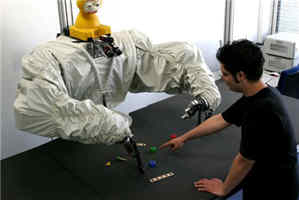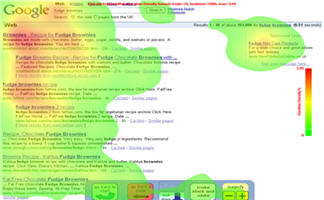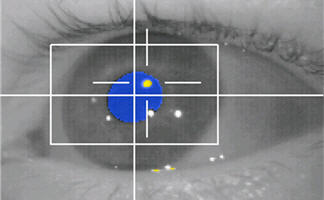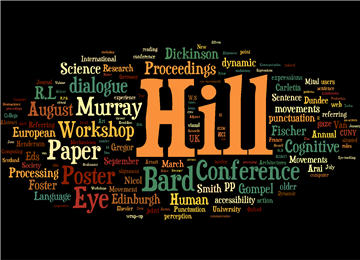background
 I'm a cognitive scientist (the dark-side of psychology) at the University of Edinburgh with a joint appointment across two schools and colleges, proving that multidisciplinary work is possible despite being a nightmare for the university administrative structure. I'm based in both the Institute for Language, Cognition and Computation (School of Informatics, College of Science & Engineering) and Politics and International Relations (School of Social and Political Science, College of Humanities and Social Science). [I'm also aware that I've neglected updating these pages and so I am preparing an overhaul.]
I'm a cognitive scientist (the dark-side of psychology) at the University of Edinburgh with a joint appointment across two schools and colleges, proving that multidisciplinary work is possible despite being a nightmare for the university administrative structure. I'm based in both the Institute for Language, Cognition and Computation (School of Informatics, College of Science & Engineering) and Politics and International Relations (School of Social and Political Science, College of Humanities and Social Science). [I'm also aware that I've neglected updating these pages and so I am preparing an overhaul.]
Current roles:
- Lecturer in Cognitive Science
- Lab manager for the Neuropolitics Research Laboratory
- Lab supervisor for the Joint Eye-tracking Laboratory (JEL)
- Acting Co-Director of the Centre for Design Informatics (along with Chris Speed)
- Personal Tutor of Informatics MSc Students
 In the emerging discipline of Neuropolitics, I'm the lab manager for the Neuropolitics Reseach Labs, a new facility at Edinburgh opened in 2016 under the direction of Laura Cram (Professor of European Politics). Recently, our focus has been the ESRC programme "The UK in a Changing Europe". This was primarily concerned with examining public attitudes to the European Union in the run up to the EU referendum due which took place in the UK on 23 June 2016. My part involved analysing the facial coding of people watching political and contemporary audio-visual media. Basically, facial expressions are a great indicator of your emotional engagement and affective responses to stimuli. This work is in collaboration with CrowdEmotion and you can try out an example yourself (webcam required). Why not get involved and be part of the debate about EU membership? Tweet images, cartoons, videos, and comments that capture your image of the EU to @myimageoftheEU using the hashtag #myimageoftheEU and become part of our Twitter gallery. Hopefully, the ESRC is going to provide some follow-up funds soon. Naturally enough, the NRLabs focus now has shifted towards the Brexit process, issues of identity, implications for Scotland (indyref2) and the whole business of fake news, information provenance, trust and "filter bubbles". You can hear about the NRLabs on BBC Radio 4: Brexit: A Guide for the Perplexed - Can Scotland do Brexit differently? [http://www.bbc.co.uk/programmes/b08dnwrf] and Analysis - How Voters Decide [http://www.bbc.co.uk/programmes/b08ff18d].
In the emerging discipline of Neuropolitics, I'm the lab manager for the Neuropolitics Reseach Labs, a new facility at Edinburgh opened in 2016 under the direction of Laura Cram (Professor of European Politics). Recently, our focus has been the ESRC programme "The UK in a Changing Europe". This was primarily concerned with examining public attitudes to the European Union in the run up to the EU referendum due which took place in the UK on 23 June 2016. My part involved analysing the facial coding of people watching political and contemporary audio-visual media. Basically, facial expressions are a great indicator of your emotional engagement and affective responses to stimuli. This work is in collaboration with CrowdEmotion and you can try out an example yourself (webcam required). Why not get involved and be part of the debate about EU membership? Tweet images, cartoons, videos, and comments that capture your image of the EU to @myimageoftheEU using the hashtag #myimageoftheEU and become part of our Twitter gallery. Hopefully, the ESRC is going to provide some follow-up funds soon. Naturally enough, the NRLabs focus now has shifted towards the Brexit process, issues of identity, implications for Scotland (indyref2) and the whole business of fake news, information provenance, trust and "filter bubbles". You can hear about the NRLabs on BBC Radio 4: Brexit: A Guide for the Perplexed - Can Scotland do Brexit differently? [http://www.bbc.co.uk/programmes/b08dnwrf] and Analysis - How Voters Decide [http://www.bbc.co.uk/programmes/b08ff18d].
Under the general remit of the Human Communication Research Centre, I specialise in Human-Machine Interaction (robots, virtual agents, computer interfaces), multimodal communication and technology use for the older population. This covers a range of psychological aspects, including social interaction and cognition, audio-visual perception, communication, language processing, joint action and ageing (young and old). A substantial amount of my life is spent analysing people’s eye movements while they read, interact with technology, or engage in dialogue and co-operative actions. The purpose? To unravel the mysteries of human cognition while simultaneously improving the efficiency, interfaces and design of computer systems. There is little chance of me having to retire early. I'm also collaborating with the Aberdeen Biomedical Imaging Centre and the Centre for Rural Health to investigate the links between use of Information Technology and cognitive reserve in older adults (using the 1936 Aberdeen Birth Cohort).
An extension of my Design Informatics work, I spent a lot of time gathering biometric, physiological and neuro data for the Harmonium Project: the grand opening of the 2015 Edinburgh International Festival. Working with 59 Productions, I monitored members of the Festival Chorus while they sang (eye-tracking, EEG, heart rate, ultrasound and motion). This was then visualised and projected onto the outside of the Usher Hall during the performance of John Adams's Harmonium. You can read my blog article on the Edinburgh International Festival website. 59 Productions returned for Deep Time, celebrating Edinburgh's geoscience rather than neuroscience last year. I also teach Case Studies in Design Informatics 1 & 2, core modules in the Design Informatics Masters programme that spans the School of Informatics and the Edinburgh College of Art.
 Previous major multinational and multidisciplinary projects include generating and analysing real-world navigation dialogues between a human and a virtual guide via a mobile phone app (SPACEBOOK) and the cognitive modelling and analysis of professional translators (CASMACAT). I've also investigated cooperative joint action and multimodal communication for Human-Robot Interaction (JAST); over in Psychology I worked on Dynamic Images and Eye Movements (DIEM), the aim of which was to model visual attention over moving, real-world stimuli. Acronyms are a big part of research (or getting funding anyway). Recently I've become interested in (cyber) security, particularly "usable" security and human factors. The old adage about the human being the weakest link in any security system remains true. For me, this combines issues of basic Human-Computer Interaction (HCI) design, human memory and attention, along with establishing trust, comfort and confidence (factors that also have strong political connotations). Plus, of course, the flip-side: how to prevent trust, comfort and confidence from being exploited/abused (i.e. risk assessment in a digital environment). This is especially true for the youngest technology adopters/users and ties in with the interest of the Learning and Adaptive Environments Research Lab (LAERLab).
Previous major multinational and multidisciplinary projects include generating and analysing real-world navigation dialogues between a human and a virtual guide via a mobile phone app (SPACEBOOK) and the cognitive modelling and analysis of professional translators (CASMACAT). I've also investigated cooperative joint action and multimodal communication for Human-Robot Interaction (JAST); over in Psychology I worked on Dynamic Images and Eye Movements (DIEM), the aim of which was to model visual attention over moving, real-world stimuli. Acronyms are a big part of research (or getting funding anyway). Recently I've become interested in (cyber) security, particularly "usable" security and human factors. The old adage about the human being the weakest link in any security system remains true. For me, this combines issues of basic Human-Computer Interaction (HCI) design, human memory and attention, along with establishing trust, comfort and confidence (factors that also have strong political connotations). Plus, of course, the flip-side: how to prevent trust, comfort and confidence from being exploited/abused (i.e. risk assessment in a digital environment). This is especially true for the youngest technology adopters/users and ties in with the interest of the Learning and Adaptive Environments Research Lab (LAERLab).
![]() With experience of working for psychology and computing departments at both Edinburgh and Dundee, I'm used to working on multidisciplinary projects, as well as teaching courses and supervising students in psychology, computing, linguistics, politics, business studies and art/design. I’ve organised international conferences, co-edited the book “Eye Movements: A Window on Mind and Brain” and try to find time to write up as much of my research as possible. As well as being involved in several multinational EU projects, I have previously been funded by the Leverhulme Trust, the ESRC, IBM and have collaborated with Fujitsu. For my sins, I'm the Lab Supervisor for the Joint Eye-tracking Laboratory in the basement of the Informatics Forum and manage the brand new Neuropolitics Research Laboratory. You can follow NRLabs on Facebook, Twitter @neuropols #NRLabs, blog and Storify. I've also had some fun with conductive gel (having helped set up a combined BioSemi EEG and EyeLink eye-tracking facility in the Electrophysiology Suite in Psychology).
With experience of working for psychology and computing departments at both Edinburgh and Dundee, I'm used to working on multidisciplinary projects, as well as teaching courses and supervising students in psychology, computing, linguistics, politics, business studies and art/design. I’ve organised international conferences, co-edited the book “Eye Movements: A Window on Mind and Brain” and try to find time to write up as much of my research as possible. As well as being involved in several multinational EU projects, I have previously been funded by the Leverhulme Trust, the ESRC, IBM and have collaborated with Fujitsu. For my sins, I'm the Lab Supervisor for the Joint Eye-tracking Laboratory in the basement of the Informatics Forum and manage the brand new Neuropolitics Research Laboratory. You can follow NRLabs on Facebook, Twitter @neuropols #NRLabs, blog and Storify. I've also had some fun with conductive gel (having helped set up a combined BioSemi EEG and EyeLink eye-tracking facility in the Electrophysiology Suite in Psychology).
Academic qualifications:
B.Sc. (Hons) Logic & Philosophy of Science – Statistics
M.Phil. Cognitive Science
Ph.D. Psychology
Binge researching (defined by Arnt Lykke Jakobsen in his exaugural), cynicism, poverty and self-abuse.
Academic Link / Quote of the moment:
"ICTs [information and communication technologies] are great in making information available; they are less successful in making it accessible, and even less so in making it usable."
Floridi, Luciano (2013). E-ducation and the languages of information. Philosophy & Technology, 26(3), 247-251. doi: 10.1007/s13347-013-0124-9.
An example of how technology accessibility can lead to non-native language preference despite cultural differences. How Georgians have abandoned their (vigesimal) number system in favour of Russian - at least for mobile phone numbers:
Sherouse, Perry (2014). Hazardous digits: Telephone keypads and Russian numbers in Tbilisi, Georgia. Language & Communication, 37, 1-11. doi: 10.1016/j.langcom.2014.03.001.
A window into the future
Well, this is perhaps stretching the concept of Human Robot Interaction a bit far, and it doesn't even involve language, but it is a nicely produced video demonstrating human and robot sword skills, so what's not to like?










